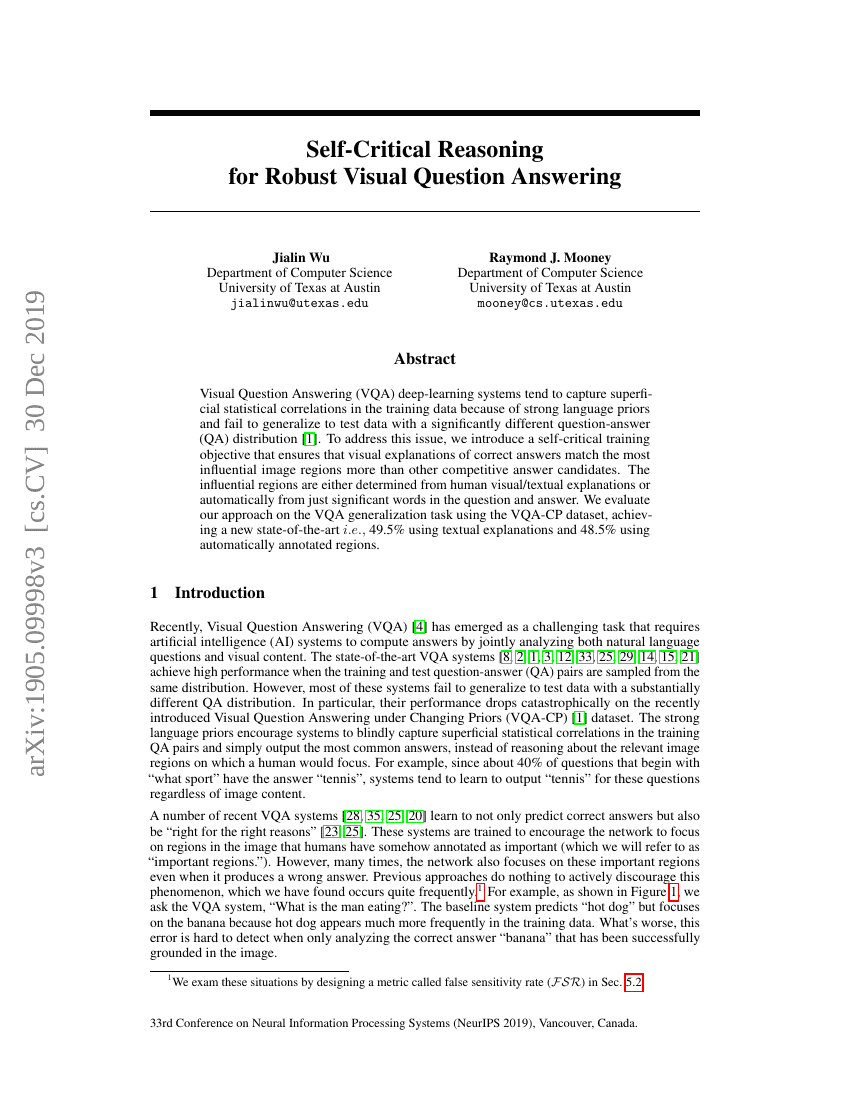Command Palette
Search for a command to run...
Jialin Wu; Raymond J. Mooney

Abstract
Visual Question Answering (VQA) deep-learning systems tend to capture superficial statistical correlations in the training data because of strong language priors and fail to generalize to test data with a significantly different question-answer (QA) distribution. To address this issue, we introduce a self-critical training objective that ensures that visual explanations of correct answers match the most influential image regions more than other competitive answer candidates. The influential regions are either determined from human visual/textual explanations or automatically from just significant words in the question and answer. We evaluate our approach on the VQA generalization task using the VQA-CP dataset, achieving a new state-of-the-art i.e., 49.5% using textual explanations and 48.5% using automatically annotated regions.
Code Repositories
Benchmarks
| Benchmark | Methodology | Metrics |
|---|---|---|
| visual-question-answering-on-vqa-cp | UpDn+SCR (VQA-X) | Score: 49.45 |
Build AI with AI
From idea to launch — accelerate your AI development with free AI co-coding, out-of-the-box environment and best price of GPUs.